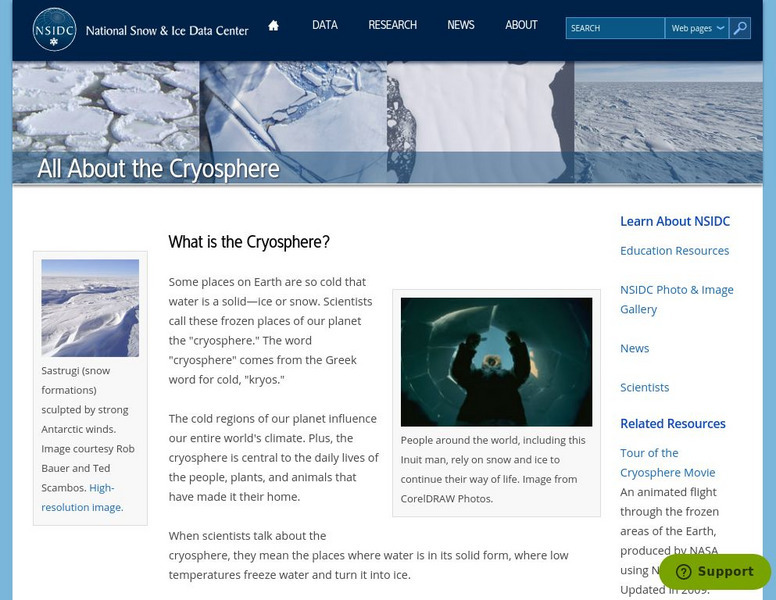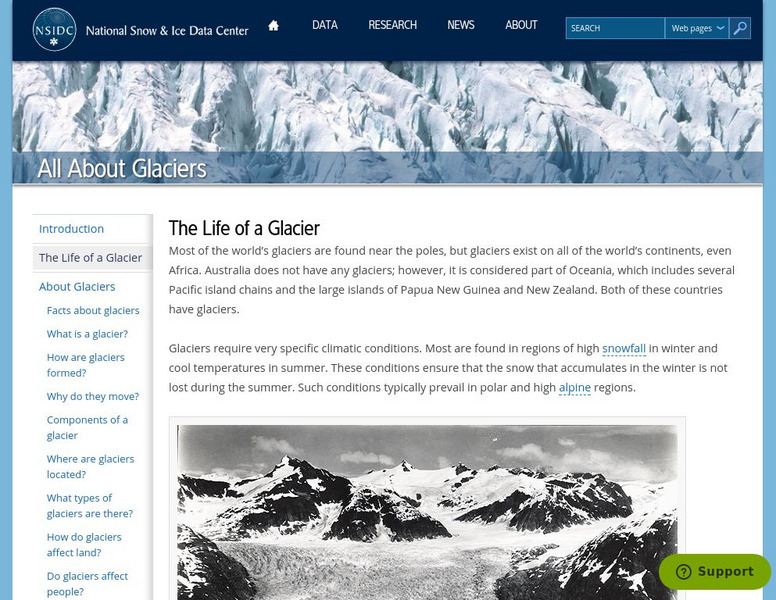National Snow and Ice Data Center
National Snow and Ice Data Center: All About Glaciers
Extensive information about glaciers. Tells about the life of a glacier, how they form, how they impact the surrounding areas, and what happens when glaciers stop growing. Includes a photo gallery, and links to scientific research on...
National Snow and Ice Data Center
National Snow and Ice Data Center: All About the Cryosphere
What makes up the polar ice caps (cryosphere) and why are they important to those who don't live there? This comprehensive resource answers these questions and provides dramatic evidence for global warming.
National Snow and Ice Data Center
National Snow and Ice Data Center: All About Glaciers: Glacier Types
Provides photographs of nine different types of glaciers with information about where they are located.
National Snow and Ice Data Center
National Snow and Ice Data Center: All About Glaciers: Why Do They Move?
Explains what the forces are that cause glaciers to move, what their movement looks like, how they advance and retreat, or even surge forward.
National Snow and Ice Data Center
National Snow and Ice Data Center: All About Glaciers: Types of Glaciers
Provides short descriptions of thirteen types of glaciers.
National Snow and Ice Data Center
National Snow and Ice Data Center: All About Glaciers: The Life of a Glacier
Explains the conditions needed for glaciers to exist, how they begin to form, what causes them to flow, and why they may retreat.
National Snow and Ice Data Center
Nat. Snow and Ice Data Center: All About Glaciers: Where Are Glaciers Located?
Explains where glaciers can be found and what conditions are needed for them to exist. Includes a table showing where glaciers can be found around the world and the approximate areas. These figures were, however, from 2008.








